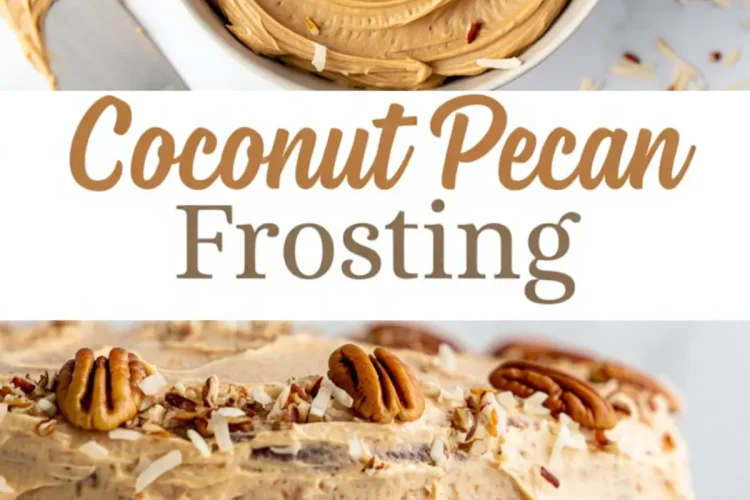This is the kind of frosting that stays with you. Not just on the cake, but in memory. Rich, thick, and packed with chewy coconut and toasted pecans, this stovetop coconut pecan frosting recipe builds a deep, buttery flavor that sets it apart from standard cake frosting.
You’ll learn how to make it the proper way. From-scratch, cooked gently, stirred by hand. The texture is spreadable and textured, not airy or whipped. For anyone searching for a coconut pecan icing that works beautifully with German chocolate cake or brownies, this one gets the job done.
This is the kind of frosting you build slowly. No powdered shortcuts. Just attention, heat, and a wooden spoon.
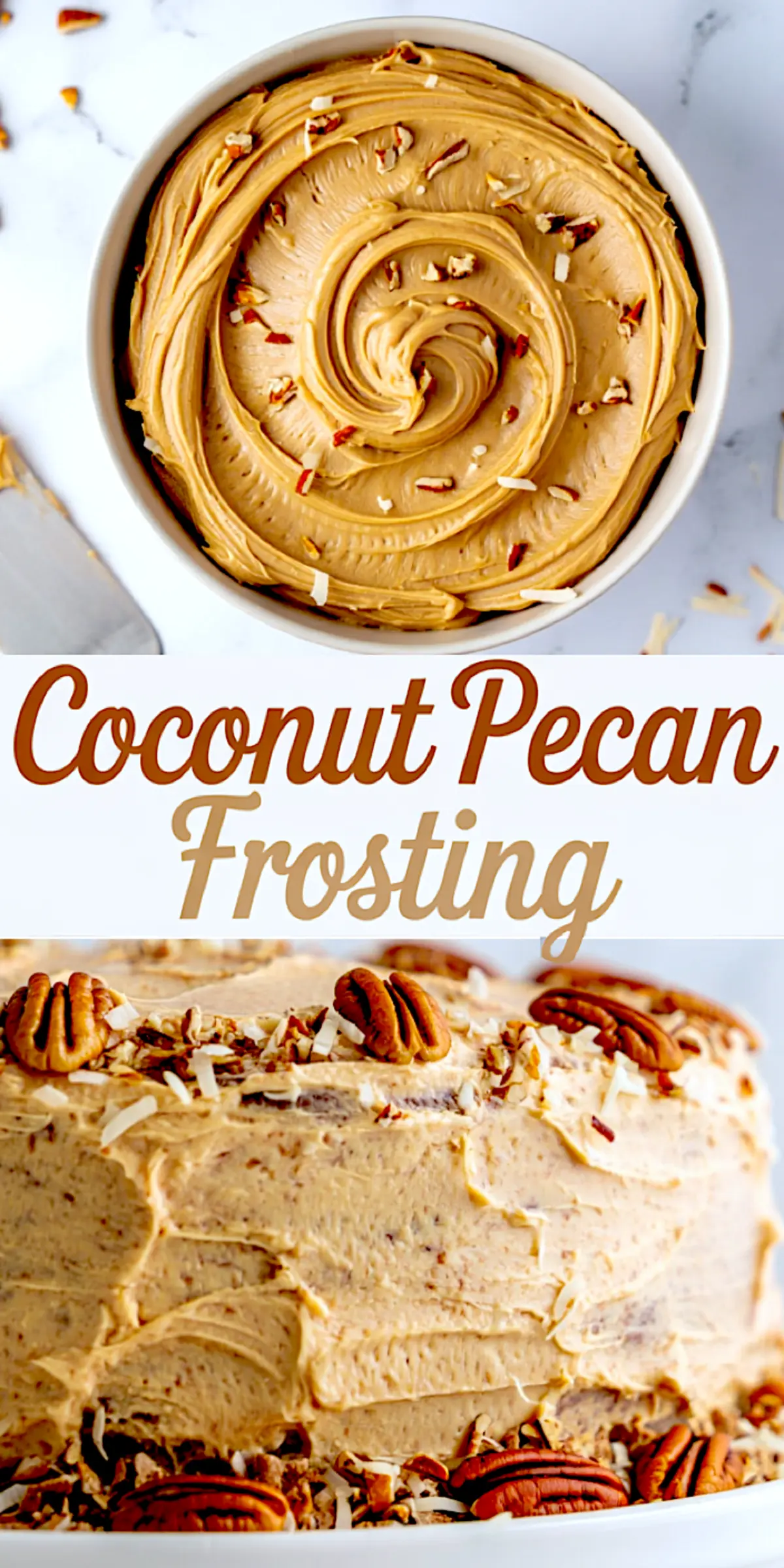
Evaporated Milk Creates Strength and Stability
Evaporated milk gives the base its character. It thickens into something almost custard-like once heated with the egg yolks and sugar. That thick base is what allows this coconut icing to sit on cakes, hold its form, and slice neatly.
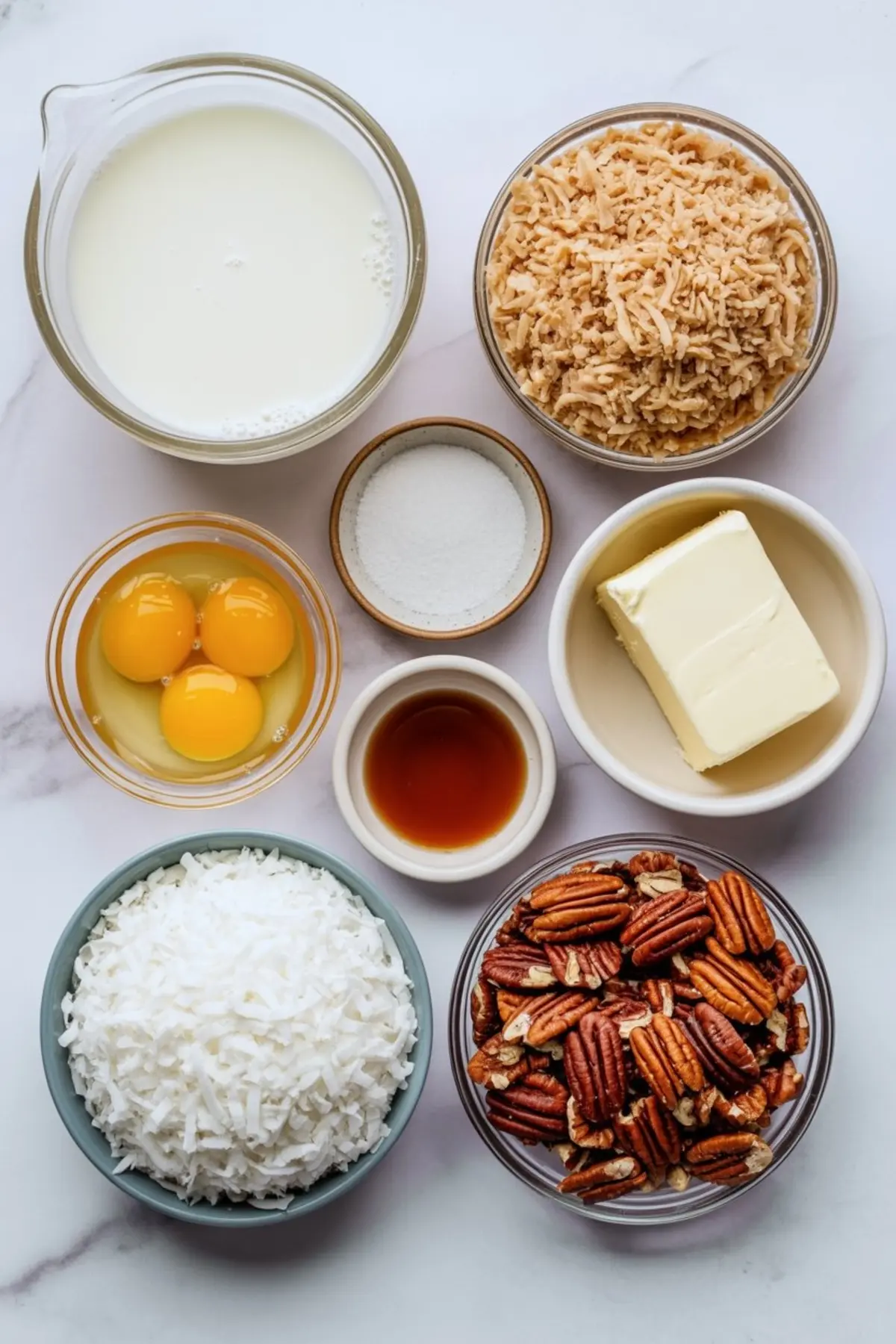
I’ve used heavy cream in the past. It gave a softer texture, more spoonable than spreadable. But evaporated milk delivers better structure. If you’re making a layered German chocolate cake, choose evaporated milk for clean, confident slices.
If you’re looking for a light alternative, try Whipped Cream Frosting instead. It’s gentler and airier, best for single-layer cakes.
Egg Yolks Are the Foundation You Shouldn’t Skip
The yolks aren’t optional. They turn the mixture from sweet syrup into a silky, cohesive custard. Without them, the texture slips. It turns gritty and unstable.
Once, I skipped the yolks thinking the coconut and pecans would hold things together. They didn’t. The result looked fine at first, then slid right off the cake after ten minutes. Lesson learned. Stick with the yolks and stir continuously for best results.
Toasted Pecans vs. Raw: Why Toasting Matters
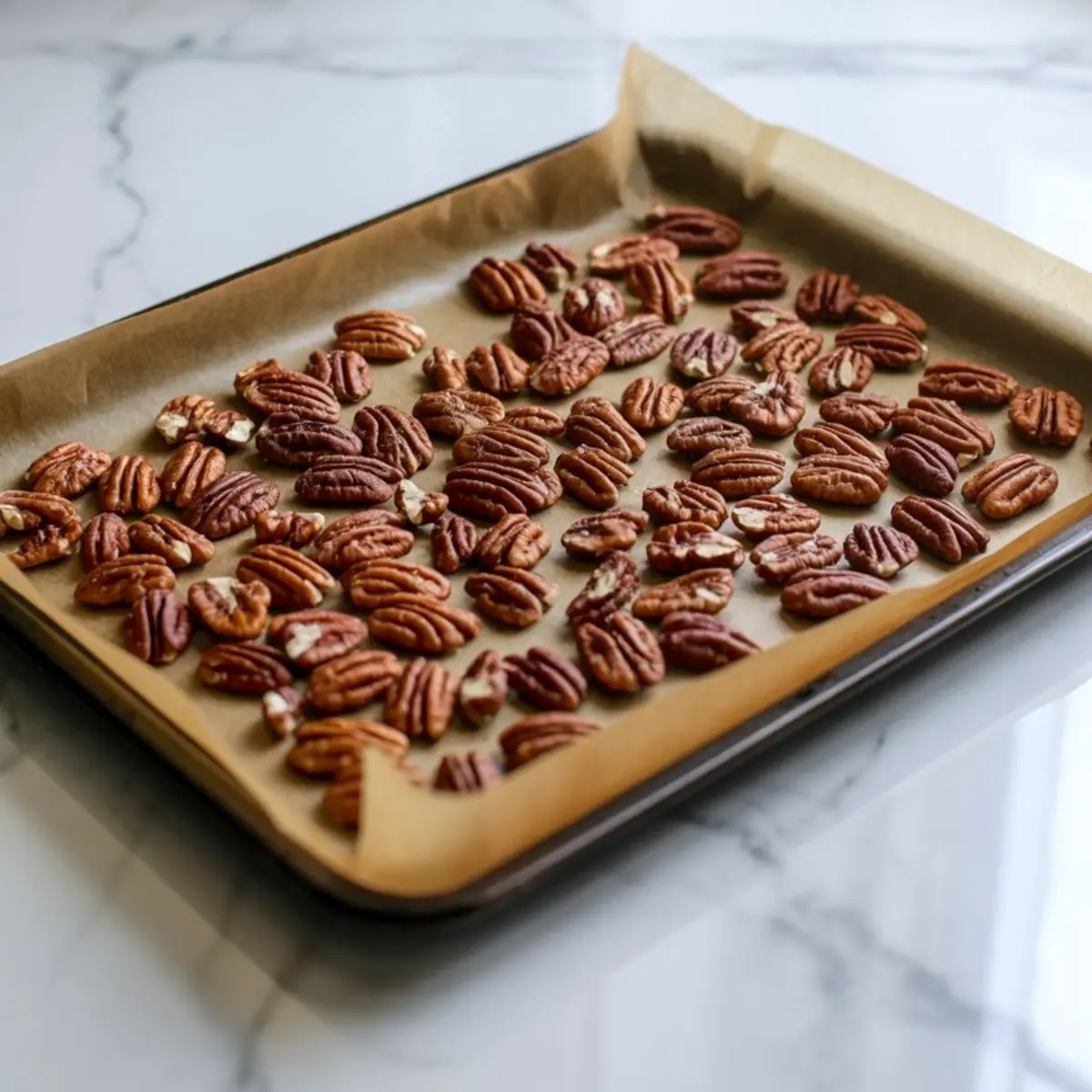
Toasting the pecans is a small step, but it changes everything. It deepens the nutty flavor and adds just the right crunch. The raw version stays waxy and bland.
I always toast the full amount, even if I don’t plan to use it all. The aroma alone is worth the extra five minutes. And it makes the whole frosting feel more finished, more deliberate.
If you’re working with something like spice cake or pumpkin cake, try Maple Frosting as an alternative. It brings a rich, darker sweetness with less texture.
Why Sweetened Coconut Brings More Than Just Sweetness

Sweetened shredded coconut does more than add flavor. It contributes to the chew. That texture is key to why this frosting feels so full and satisfying.
I’ve tried unsweetened coconut as a swap. It can work, but the texture turns dry and the sweetness drops off. If you’re pairing with an already sweet cake, mix half sweetened and half unsweetened. For a full batch on brownies or layer cakes, sweetened coconut holds everything together with better moisture.
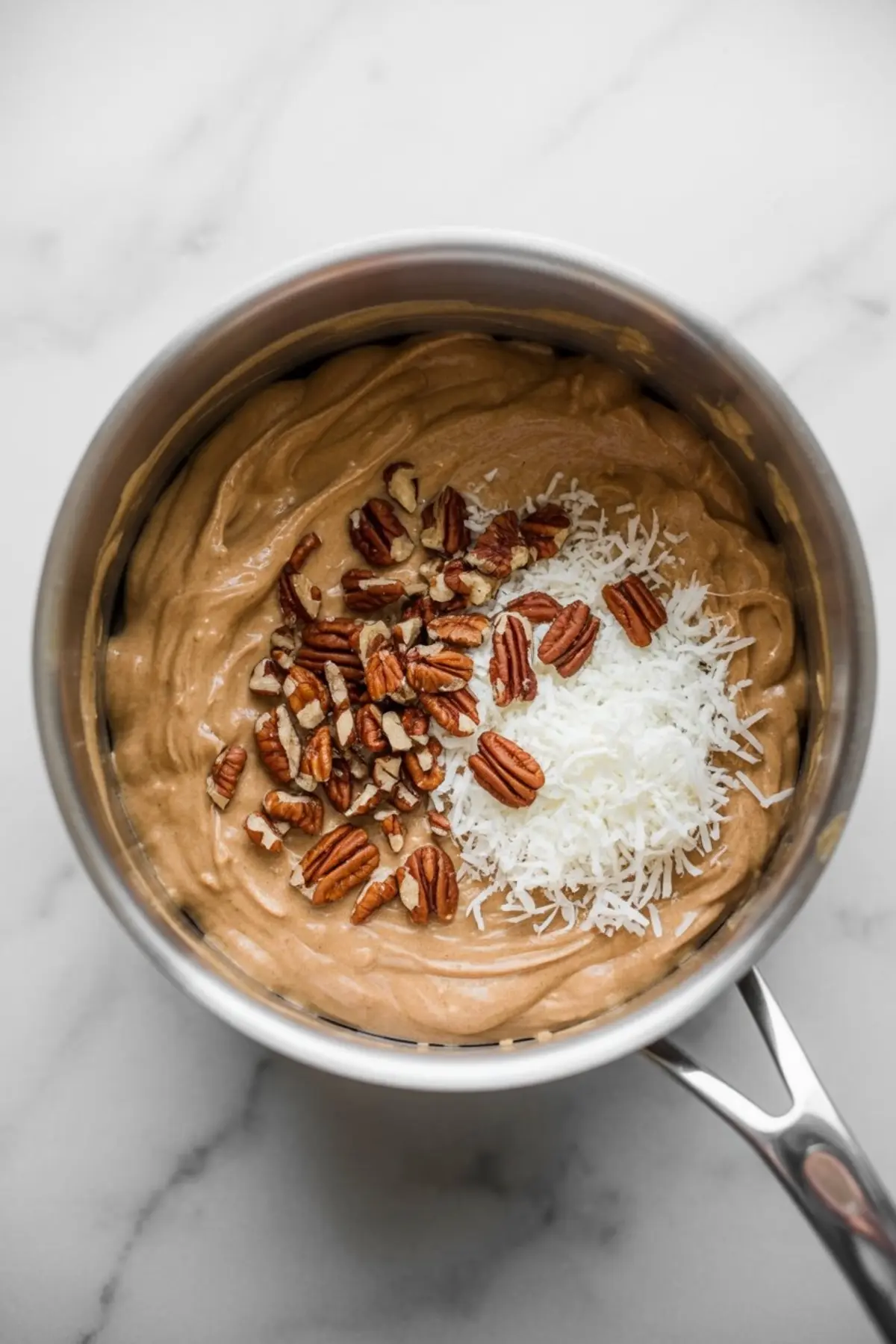
Stovetop Stage: Where Texture Is Built
This frosting requires attention. The stovetop moment is where the transformation happens. Combine the evaporated milk, sugar, butter, and egg yolks in a saucepan and stir gently but constantly.
Around the ten-minute mark, the base starts to bubble and thicken. The texture goes from thin to glossy. When you see that, take it off the heat, stir in the vanilla and salt, then fold in the coconut and pecans while the mixture is still warm.
That warmth helps everything bind evenly. Don’t rush this stage. The cooling process happens after, and that’s when the frosting gains its spreadable body.
How I Choose Between Cinnamon and Cream (Optional Add-ins)
I’ve used both the cinnamon and heavy cream add-ins from time to time. Cinnamon gives the frosting a subtle spiced edge. Heavy cream softens the overall texture slightly and adds more gloss.
For layer cakes, I keep it simple. No extras. But for cupcake toppings or brownie layers, a little cinnamon makes the whole dessert feel warmer. Use both if you’re going for something bold and rich. Use neither if you want the classic coconut pecan frosting as it was traditionally made.
If you need a lighter, pipeable base instead, the Vanilla Buttercream Frosting gives more flexibility for decorative work.
Serving Suggestions for Cakes, Cupcakes, and More
This frosting isn’t delicate. It’s dense, flavorful, and made for sturdy desserts. I’ve used it on German chocolate cakes, yes, but also as a topping for cooled brownies, a filling between banana cake layers, and even on top of spice muffins for a quick brunch option.
Let the dessert cool fully before frosting. This prevents slipping or melting. For cupcakes, use a spoon or an offset spatula. It doesn’t pipe well, and that’s part of its charm.
Pairing tip: use it on a two-layer cake where texture is the main feature. One bite should feel chewy, creamy, and nutty all at once.
Storage Notes That Actually Work
Store any leftovers in an airtight container in the fridge. It will thicken further after cooling. Before using again, leave it out at room temperature for about 20 minutes or stir gently to revive its texture.
It lasts five full days without changing flavor. I’ve frozen extra batches before with good results. Let it defrost in the fridge, then stir and use within 24 hours.
Looking for something more heat-stable for summer gatherings? The German Chocolate Frosting version with less cream holds up better in warm weather.
Pin, Bake, and Tell Me What You Think
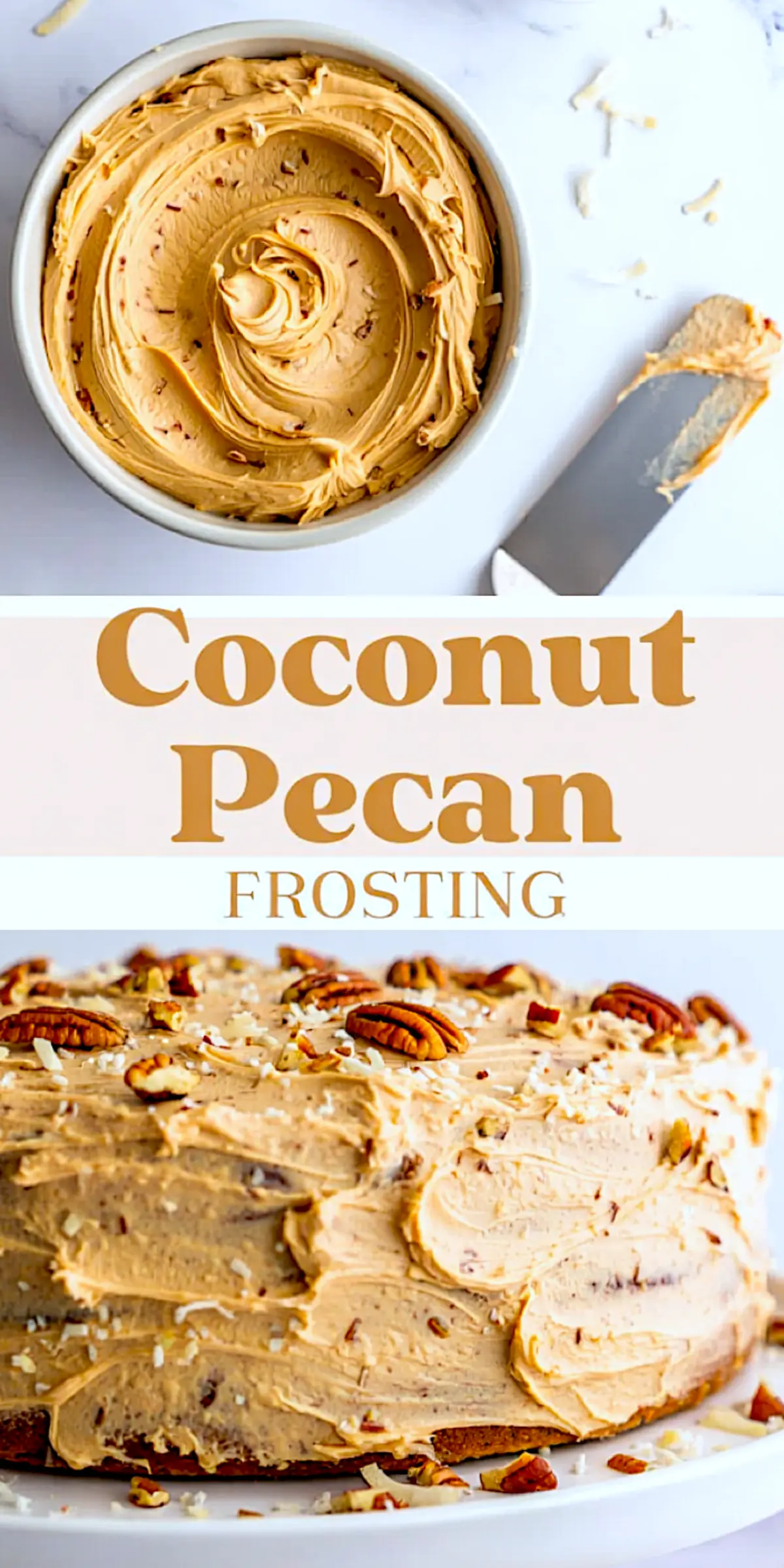
Save this to your Cake Frosting or Frosting Recipes Easy Pinterest board. This is the kind of recipe you’ll want to have on hand for birthdays, holidays, and days when something warm and nostalgic feels right.
If you try this Coconut Pecan Frosting Recipe, come back and let me know how it turned out. Share your tips, your tweaks, or even what cake you paired it with. If you have any questions, drop them in the comments. I always check.
Coconut Pecan Frosting
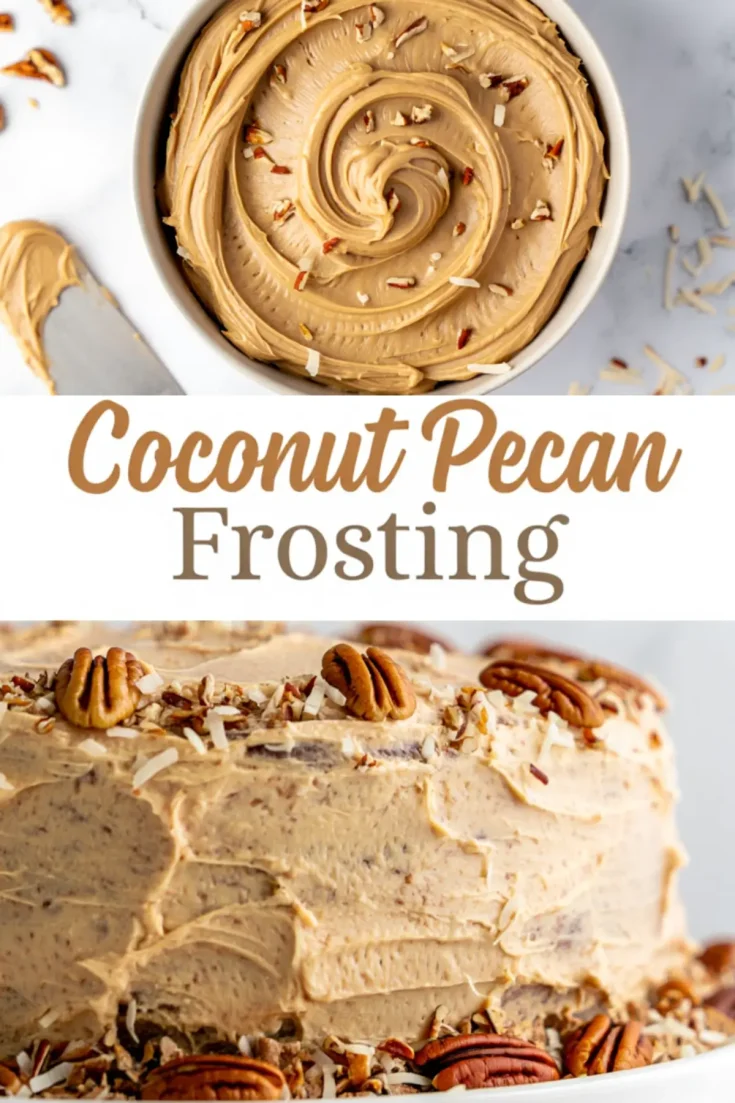
Rich, buttery, and loaded with toasted coconut and chopped pecans, this coconut pecan frosting recipe is the perfect match for your favorite German chocolate cake or brownies. If you’re looking for an old-fashioned, stovetop coconut pecan filling that doubles as a decadent coconut icing, this one delivers. It’s thick, spreadable, and packed with texture, making it ideal for anyone who loves cake frosting that’s both sweet and nutty. Whether you call it coconut pecan icing or coconut frosting, this Southern classic is a must-know for any baker. Great for cupcakes, layer cakes, or spooning straight from the bowl—this one belongs in your frosting recipes easy board.
Ingredients
- 1 cup evaporated milk
- 1 cup light brown sugar, packed
- 3 large egg yolks
- 1/2 cup unsalted butter (1 stick)
- 1 1/2 teaspoons pure vanilla extract
- 1 1/2 cups sweetened shredded coconut
- 1 cup chopped pecans, toasted
- Pinch of salt
- Optional:
- 1/4 teaspoon ground cinnamon
- 1/4 cup heavy cream
Instructions
- TOAST THE PECANS: Preheat the oven to 350°F (175°C). Spread the chopped pecans on a baking sheet in a single layer and toast for 5 to 7 minutes, or until fragrant and golden. Remove from oven and let cool completely.
- COOK THE BASE: In a medium saucepan, whisk together evaporated milk, light brown sugar, egg yolks, and unsalted butter. Set the pan over medium heat and stir continuously with a wooden spoon or heatproof spatula. Cook for 10 to 12 minutes, or until the mixture thickens and starts to bubble gently.
- ADD VANILLA AND SALT: Remove the saucepan from heat. Stir in the vanilla extract and a pinch of salt until fully incorporated.
- MIX IN THE COCONUT AND PECANS: Fold in the sweetened shredded coconut and the toasted pecans. If using cinnamon or heavy cream, add them at this stage and stir until evenly combined.
- COOL AND USE: Let the frosting cool to room temperature before spreading. It will thicken further as it cools, reaching a spreadable, spoonable texture ideal for layer cakes, cupcakes, and other desserts.
Notes
Toasting the pecans enhances their flavor and adds depth to the frosting. For a less sweet option, you may substitute part of the sweetened coconut with unsweetened shredded coconut. Store any unused frosting in an airtight container in the refrigerator for up to 5 days. Rewarm slightly before using.

